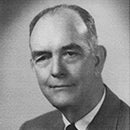Remember When: Remembering Seth Vining, Sr.
Published 10:00 pm Thursday, April 20, 2017
Continuing a review for the more recent readers of my columns, here are my recollections of Seth M. Vining, Sr. I will quote extensively from a talk I gave to the Polk County Historical Association before I became a columnist for the Tryon Daily Bulletin.
Mr. Vining was a father figure and role model to me. I went to work for him when I was a child, continued through adolescence, and spent time with him whenever I could as an adult. Mr. Vining had an abiding interest in his fellow humans, and sought always to bring out their good qualities and encourage them to be their best. He joyously chronicled the good, and it was with some anguish that he dutifully reported the bad, that men do.
My grandfather, T. A. Rippy, took me in to meet Mr. Vining when I was ten years old. He was sufficiently impressed with my potential that he offered to let me come in on Saturdays and set up the display type portions of ads to be run in the Bulletin. I also cleaned up everything, and for all this he even paid me a wee bit!
That was very early in World War II. The Bulletin cost one cent per copy, had two columns to a page, and was delivered in town by young boys. The Bulletin was Mr. Vining’s brainchild and it took up most of his time. He had no other hobbies than his family (which included everybody in the whole world) and the Bulletin. He did belong to a church and the Kiwanis club, but he did not take time off for anything else—he ran the paper all day every day, and invested his interest in the people of the community.
He not only taught me the printing trade, but how to organize tasks for rapid accomplishment with minimum energy. He put materials at point of use, arranged stacks of paper for folding with minimum motion, showed me why as well as how, and encouraged me to look for more efficient ways to get the paper out. “Use your head, Garland,” he would say. “Even a billy goat uses his head.”
His desk was always piled high with newspapers, so that only the typewriter and telephone were visible. He read and clipped articles from the papers each morning, putting the clippings on a spindle. There was also a stack of newsprint sheets (typewriter size, what the paper was printed on in those days), on which to write news and ads coming over the phone. The scissors were tied to the typewriter frame with one cord, a pencil with another (no ballpoint pens in those days). Mr. Vining never lost a second looking for a pencil when the phone rang, and the shears always came right to his hand for clipping.
Mr. Vining published the Bulletin with the latest printing technology at all times. After the linotype machine, the Kluge automatic feeder on the press was the most fascinating machine in the shop. He soon discontinued the old full-size weekly, the Polk County News, and enlarged the Bulletin to four columns per page. This change required a huge new printing press; also a new folding machine appeared.
Later, he made the drastic changeover to offset printing. The paper was printed on yet another new press that gently transferred a perfect image from a thin metal sheet to the paper. Mr. Vining knew and understood every facet of every operation that produced a new paper every day; but for all his knowledge, he would often remind me to “Remember, Garland, we are ALL ignorant, except on certain subjects.”
I think it is to his credit that Mr. Vining did not hang on until he could no longer publish the Bulletin, but instead turned it over to Seth Jr. while both he and the Bulletin were in good health. Mr. Vining then turned his attentions to compiling a history of Polk County, and was a founder of the Polk County Historical Association. Mr. Vining continued to promote this area and its citizens as long as he lived.






